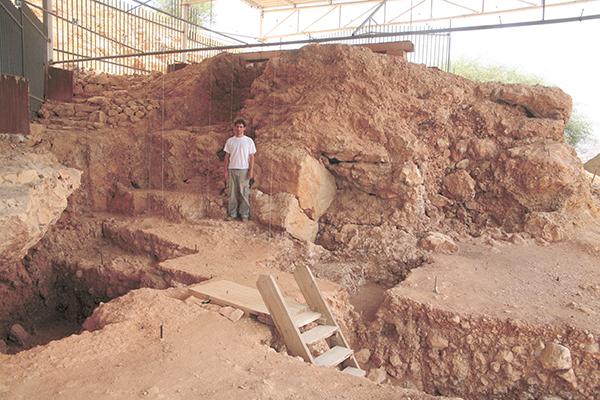
A Binghamton University professor unearthed eight ancient human teeth that may provide evidence about humans’ evolutionary history in the Middle East.
Rolf Quam, a visiting assistant professor in the anthropology department at BU, worked on the recent archaeological excavation of a cave site near the city of Rosh HaAyin in central Israel where the teeth were found.
“The teeth come from a time period — 200,000 to 400,000 years ago — when we don’t have very many fossils from this area of the world,” Quam said. “So they are offering new insights into who these early inhabitants of the Middle East were.”
The teeth were found in Qesem Cave, a site that had once been occupied by prehistoric humans, which was discovered in 2000. Quam is part of an international team of researchers, led by Israel Hershovitz of Tel Aviv University, who are researching the exact age of the teeth and whether they come from homo sapiens.
“The teeth are definitely human. There’s no question about that,” Quam said. “The question is whether they can be attributed to modern humans and the species homo sapiens or whether they represent an earlier ancestral species of ourselves.”
Using traditional anthropological methods and CT scans, the researchers are trying to determine the story behind these teeth. But this has proven difficult because they do not all come from the same person. Rather, Quam and his colleagues believe the teeth come from at least six individuals of varying ages.
According to a media report from the University administration, scientists rely on subtle indicators provided by more than one type of tooth to differentiate between dental sets from modern humans and Neanderthals, an earlier hominid species that has died out. For example, the size and shape of Neanderthal incisors and molars differ in telltale ways from those of homo sapiens. The lack of several teeth from the same individual amongst those found in Qesem Cave makes it harder for the researchers to ascertain already slight distinctions.
Nevertheless, Quam remains excited about the find and the information it could present about the history of the human species.
“This find is one more piece in the puzzle of our ancestry,” Quam said.
He also said that the teeth “are providing new insights into the populations of humanity who have occupied the Middle East, an area of the world that has for millennia been a crossroads for migration of animals and humans in and out of Africa and Europe.”
It is believed that homo sapiens shared a common ancestor in Africa with Neanderthals. Scientists have long said one group migrated to Europe where they developed into Neanderthals, while the ancestors of modern-day humans remained in Africa and western Asia. These teeth could determine which species populated the Middle East during the time period from which they date, the end of the Lower Paleolithic. If the teeth prove to belong to homo sapiens, they would suggest that humans either originated in what is today Israel and not Africa, or migrated out of Africa much earlier than previously thought.
The abstract of the report on the findings, which was published in the American Journal of Physical Anthropology, states, “a few traits may suggest some affinities with members of the Neanderthal evolutionary lineage.” But other signs point to similarities of the Skhul and Qafzeh lineage of early modern humans that have been found in Israel and dated to about 100,000 years ago.
Although Quam has only participated in research on the teeth found at Qesem Cave, he says that the site has provided other archaeologists with many other finds as well.
“Excavations are currently ongoing by several archaeologists from Tel Aviv University, and the site has yielded a large number of stone tools and animal remains,” Quam said. “The evidence from the site is providing archaeologists with new data regarding the lifeways of these ancient humans.”


